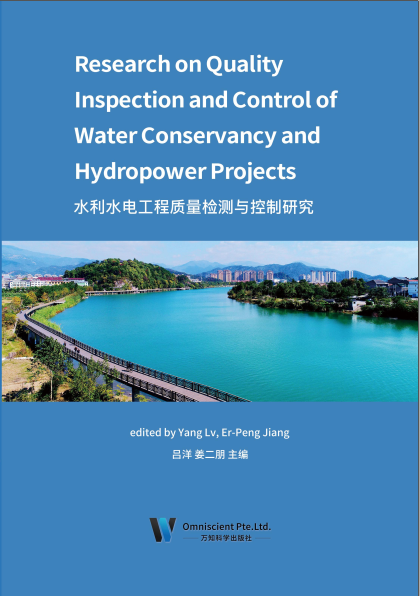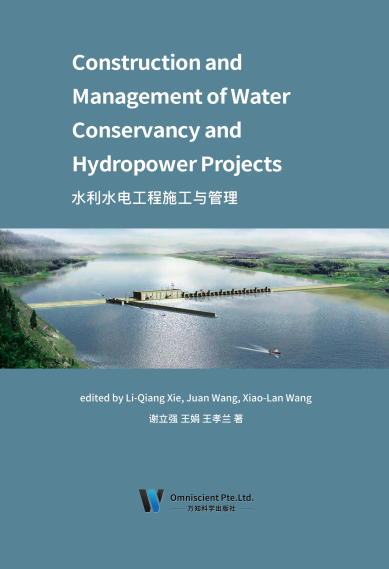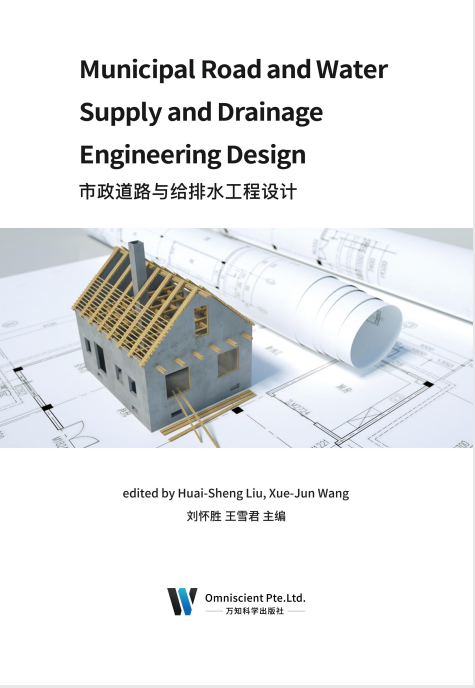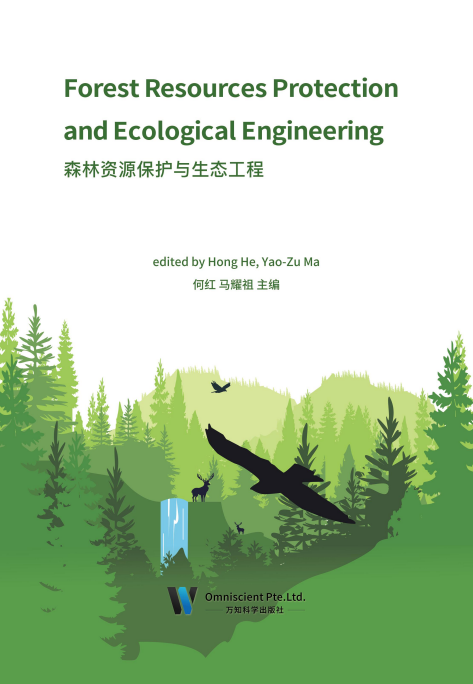
With the vigorous development of water conservancy and hydropower in China, theconstruction of many water conservancy and hydropower projects, the continuous progress of water conservancy and hydropower technology, the continuous acceleration of equipment renovation and the continuous improvement of construction technology level, the quality and safety of water conservancy and hydropower projects are increasingly concerned by the state and society. It has been paid more and more attention to strengthen the quality control and inspection of water conservancy and hydropower projects and further improve the quality management level of water conservancy and hydropower projects. The quality inspection of water conservancy and hydropower projects is an important measure to ensure the quality and safety of projects, and an important link in the process of project construction and operation. The professional ethics and professional quality of the quality inspectors of water conservancy and hydropower projects are the preconditions to ensure the scientific and fair quality inspection.
Water conservancy and hydropower projects usually have the characteristics of long construction period, large investment scale, complex engineering technology, many uncertain factors in construction and difficult construction quality control. Facing the new round of rapid development of water conservancy and hydropower projects, the quality management personnel of water conservancy and hydropower projects should have solid quality management theory and higher quality management ability. Therefore, the research on quality inspection and control of water conservancy and hydropower projects has become the current theme. Only by better grasping the quality of the project, can the water conservancy and hydropower projects play its maximum effect, and then promote the economic and social development of our country.
前 言
随着我国水利水电事业的蓬勃发展,众多水利水电工程的大量兴建,水利水电技术的不断进步,设备更新改造的不断加快以及施工工艺水平的不断提高,水利水电工程的质量与安全问题越来越受到国家和社会的广泛关注,加强水利水电工程的质量控制、检验工作,进一步提高水利水电工程质量管理水平,也日益得到重视。水利水电工程质量检验工作是保证工程质量与安全的重要措施,是工程建设、运行过程中的重要环节,而水利水电工程质量检验人员的职业道德和业务素质则是保证质量检验工作科学与公正的前提条件。
水利水电工程通常具有建设周期长、投资规模大、工程技术复杂、施工中不确定性因素多、施工质量控制难度较大等特点, 面对水利水电工程新一轮的快速发展,水利水电工程质量管理人员应具备扎实的质量管理理论和更高的质量管理能力。 所以对水利水电工程的质量检测和控制研究就成为当下的主题, 只有更好地把握工程项目的质量,才能使水利水电工程发挥其最大的成效,进而促进我国的经济社会发展。

In today’s social development process, water conservancy and hydropower project is still a very important part, its role is very prominent, such as to meet agricultural irrigation, power generation, flood control, etc. In order to improve the use and effectiveness of water conservancy projects, it is necessary to do a good job in the foundation construction of water conservancy and hydropower projects. Through the analysis of the actual implementation of the previous water conservancy and hydropower projects, it is determined that the construction of the foundation part is prone to some problems, resulting in the foundation part of the robustness, stability is not high, resulting in the whole project stability, robustness and durability is deeply affected. In this regard, we should attach great importance to the basic part of water conservancy and hydropower projects, scientifically and reasonably use the construction technology of foundation treatment, and do a good job in the design and construction of the basic part, so as to lay the foundation for the real improvement of the construction quality of engineering foundation. From this point of view, the effective application of foundation treatment construction technology of water conservancy and hydropower engineering has higher practical significance.
Therefore, this book studies the basic knowledge, construction technology and existing status of water conservancy and hydropower projects in China from the content of ten chapters, and proposes solutions, hoping to contribute to the development and progress of water conservancy projects in China.
前 言
当今社会发展过程中,水利水电工程依然是极为关键的一部分,其作用极为突出,如满足农业灌溉、发电、防洪等。为了提高水利工程的使用性、有效性,切实有效的做好水利水电工程项目的基础施工工作就显得尤为必要。而通过对以往水利水电工程项目落实实际情况的分析,确定基础部分的施工容易出现一些问题,导致基础部分的坚固性、稳定性不高,致使整个工程稳定性、坚固性及耐用性深受影响。对此,我们应当高度重视水利水电工程基础部分,科学、合理的运用基础处理施工技术,做好基础部分的设计与施工作业,为真正提高工程基础施工质量奠定基础。
由此看来,水利水电工程基础处理施工技术的有效应用具有较高的现实意义。因此本书从十章内容对我国水利水电工程的基础知识和施工技术,以及存在现状进行研究,同时提出解决措施,希望能够有助于我国水利工程的发展与进步。

Water is an important component of nature, a source of life, an indispensable resource for human life and social development, and the most active element in the ecological environment. Affected by climate, water resources in China are not evenly distributed in time and space. There is a large difference in water volume between different regions, between different years in the same region, and between flood season and dry season within the year, which leads to frequent conflicts between incoming water and water consumption. As one of the oldest engineering projects in the history of human civilization, water conservancy project has always made an important contribution to human society. Water conservancy project has the characteristics of large scale, high risk and high complexity. The success of its construction not only has a great impact on social economy, but also has an inestimable impact on people’s life and property.
The construction of water conservancy project is to construct water conservancy project according to the requirements of project structure, quantity, quality, progress and cost proposed by the design. The application, operation, maintenance and protection of water conservancy project is an important part of water conservancy project management. After the completion of water conservancy project, effective management is necessary to achieve the expected effect and verify the correctness of the original planning and design; the basic task of engineering management is to keep the integrity and safety of engineering buildings and equipment in good technical condition; correctly use water conservancy engineering equipment to control, regulate and distribute water resources and give full play to its benefits of flood control, irrigation, water supply, drainage, power generation, shipping, environmental protection, etc. To do well in the construction and management of water conservancy projects is to give full play to the two wings of birds and the two wheels of vehicles.
前 言
水是大自然的重要组成物质,是生命的源泉,是人类生活和社会发展不可缺少的重要资源,也是生态环境中最活跃的要素。我国水资源受气候影响,在时间、空间上分布不均匀,不同地区之间,同一地区不同年份之间以及年内汛期和枯水期的水量相差很大,导致来水和用水之间不相适应的矛盾频频发生。水利工程作为人类文明史上最古老的工程项目之一,一直对人类社会做出了重要的贡献,水利工程具有规模大、风险大、复杂度高等特征,其建设的成功与否不仅对社会经济产生较大影响,对人们的生命财产也具有不可估量的影响作用。
水利工程施工是按照设计提出的工程结构、数量、质量、进度及造价等要求修建水利工程的工作。水利工程的运用、操作、维修和保护工作,是水利工程管理的重要组成部分,水利工程建成后,必须通过有效的管理,才能实现预期的效果和验证原来规划、 设计的正确性; 工程管理的基本任务是保持工程建筑物和设备的完整、安全,使其处于良好的技术状况;正确运用水利工程设备,以控制、调节、分配使用水资源,充分发挥其防洪、灌溉、供水、排水、发电、航运、环境保护等效益。做好水利工程的施工与管理是发挥工程功能的鸟之两翼、车之双轮。

With the continuous development of social economy, the requirements of urban road construction are also constantly improving, and the problem of road water accumulation has become a serious disaster in urban roads, which will not only affect the normal use of municipal roads, but also shorten their service life. Based on this, this book mainly analyzes the optimal design of municipal road water supply and drainage.
With the development of national economy and the acceleration of urban construction, people have higher and higher requirements on the transportation system. In particular, the development of municipal roads has an important impact on people’s normal life and vehicle driving safety. Problems in water supply and drainage will affect the traffic capacity of road locomotives, and may even cause vehicle slippage and traffic safety. At the same time, the long-term water accumulation of the road surface will erode the subgrade, reduce the strength of subgrade soil, and even lead to the overall damage of the subgrade. The effect of municipal road water supply and drainage engineering not only directly affects the urban road, flood control, environmental protection, but also directly related to people’s work and daily life, so it has an important position that can not be ignored. Therefore, in order to ensure the normal use of municipal roads, the normal operation of the city and people’s normal life, it is necessary to design the drainage works of municipal roads scientifically and reasonably.
All in all, the design of road water supply and drainage engineering is an important guarantee for the service life and performance of municipal roads. The scientific and reasonable design of municipal road drainage system has an important impact on the function and service life of municipal roads. Therefore, when we design the municipal road water supply and drainage system, we should combine the actual situation and lessons, optimize the design scheme of the municipal road water supply and drainage system on this basis, so as to promote it to play an important role in the process of urbanization in China.
前 言
随着社会经济的不断发展,城市道路建设的各项要求也在不断提高,而道路积水问题已经成为城市道路当中的一个严重灾害,它不仅会影响到市政道路的正常使用,还会缩短其使用寿命。基于此,本书主要对市政道路给排水的优化设计进行了分析。
由于国民经济的发展以及城市建设步伐的加快,人们对交通系统的要求也越来越高。 尤其是市政道路的发展对人们的正常生活及车辆的行驶安全都有着重要影响,给排水出现问题会影响道路机车的通行能力, 甚至可能会造成车辆滑移, 影响交通安全,同时路面的长期积水会对路基产生侵蚀,降低路基土强度,严重时甚至会导致路基的整体破坏。市政道路给排水工程效果的高低 , 不仅直接影响着城市道路、防洪、 环保问题 , 也直接关系着人们的工作和日常生活 , 因此具有不容忽视的重要地位。所以为了保证市政道路的正常使用、城市的正常运转、人们的正常生活 , 必须对市政道路的排水工程进行科学合理的设计。
总而言之,道路给排水工程设计是市政道路使用寿命、性能的重要保障,市政道路排水系统设计的科学性、 合理性, 对市政道路的功能及使用寿命有着重要影响,所以,我们在进行市政道路给排水设计时要结合实际情况和经验教训,在此基础上对市政道路给排水系统的设计方案进行优化,以促进其在我国城市化进程的道路上发挥重大的作用。

Nowadays, with the rapid development of social economy, the exploitation and utilization of resources have reached a new height, and the contradiction between human and nature has become increasingly serious. The current social and economic system hascaused a lot of waste of resources. Although human beings have gradually become comfortable and convenient from the previous subsistence life, they are also faced with the problems of resource shortage, environmental pollution and ecological environment damage. So now we need to ensure the harmonious development of ecological environment protection and nature, repair the environmental damage caused by the past, strengthen the protection of the environment, reduce environmental pollution, and make human development and natural environment unified and coordinated, so as to develop for a long time.
This paper mainly expounds the protection of forest resources and environmental ecological engineering. First of all, it introduces the resources, connotation and value of forest, then expounds the existing legal system of forest resources protection in China, and expounds the problems encountered in the practice of forest resources protection, as well as the current situation and responsibility attribution; this paper describes the common disasters of forest resources and their prevention methods, the combination of forest resources protection and urban-rural integration, the main functions and structural system of ecological environment, the technical principles of environmental protection and ecological engineering, and finally how to design, monitor and evaluate the environmental protection and ecological engineering.
前 言
如今随着社会经济的飞速发展,对于资源的开采利用也达到了新的进程高度,人与自然的矛盾也日益加剧。目前的社会经济体系造成了大量的资源浪费,虽然人类已经从以前的温饱生活变得逐渐舒适和方便,但是同时也面临着资源缺乏、环境污染、生态环境破坏的难题,所以现在人类需要在发展经济的时候保证生态环境与自然和谐发展,修复以往造成的环境破坏问题,加强环境的保护,减少环境的污染,使得人类的发展和自然环境统一协调,才能长久的发展下去。
本文主要对森林资源的保护和环境生态工程做了阐述,首先是介绍了森林的资源以及内涵和价值;然后阐述了我国现有的对于森林资源保护的法律制度;对于森林资源保护的实践遇到的问题以及现状、责任归属做了一一阐述;讲述了森林资源常见的灾害有哪些以及预防的办法;对于森林资源的保护和城乡一体化相结合;阐述了生态环境主要的功能和结构体系;对保护环境生态工程的技术原理做了讲解;最后阐述了环境生态工程的保护工作需要如何设计和监测评价。